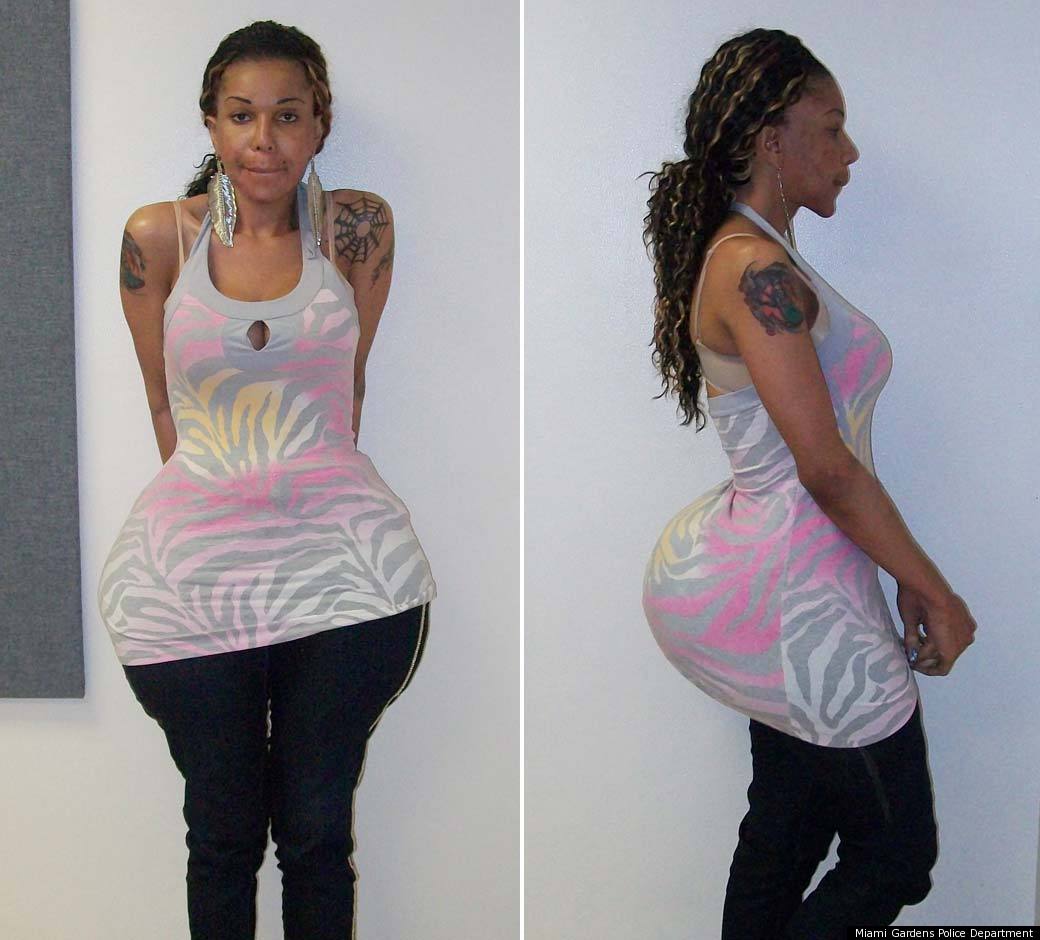Skin Bleaching
You Don't Like Your Melatonin?
Skin whitening, skin lightening and skin bleaching is the process of using natural and chemical substances in the form of soaps, pills, creams, etc. in order to lighten skin color or provide an even toned complexion.
Motives behind the use of skin lightening products vary considerably between cultures.
In many cultures skin whitening is pursued.
White skin is associated with beauty aristocracy and wealth in some countries, so whiter skin can project those qualities.
Skin lightening or skin bleaching, has existed for thousands of years.
The desire for pale skin has roots in India's history. Hinduism's complex social hierarchy, or caste system. In India, white skin is considered as a mark of class and caste as well as an asset. A white complexion was seen as noble and aristocratic. Those higher up the scale generally tend to have paler skins because the rich and educated could afford to stay indoors, while the poor and uneducated were forced to work outdoors.
In Asia, women were deeply influenced by the concept that a white complexion is powerful enough to hide a number of faults. In ancient China and Japan the saying:
"one white covers up three ugliness"

This was passed through the generations. Asian countries have long histories of utilizing white skin of personal beauty. In China, “milk-white” skin is a symbol of beauty. In Korea, flawless skin like white jade and an absence of freckles and scars have been preferred since the first dynasty.
Ancient cultures used botanicals and mineral compositions of various kinds to facilitate skin lightening. Several of these materials, researched in recent years, have been found to contain natural enzyme/hormone inhibitors, antioxidants and sunscreens. The Chinese grounded pearl from seashells into powder and swallow it to whiten their skin, while across the Yellow Sea, applying white powder to the face has been considered a woman’s moral duty since the Edo period. In Korea various methods of lightening the skin have long been used such as applying miansoo lotion and dregs of honey. Women in South India bathed with turmeric (Turmeric has a peppery, warm and bitter flavor and a mild fragrance slightly reminiscent of orange and ginger, and while it is best known as one of the ingredients used to make curry, it also gives ballpark mustard its bright yellow color.
Turmeric comes from the root of the Curcuma longa plant and has a tough brown skin and a deep orange flesh. Turmeric has long been used as a powerful anti-inflammatory in both the Chinese and Indian systems of medicine. Turmeric was traditionally called "Indian saffron" because of its deep yellow-orange color and has been used throughout history as a condiment, healing remedy and textile dye.) which is now known for its skin lightening and anti-inflammatory properties.
In modern culture, not only does skin lightness affect perceptions of a woman’s beauty, but her marital prospects, job prospects, social status, and earning potential.
Skin whitening and lightening products have dramatic growth worldwide during the past few decades. The skin-lightening industry is estimated to be worth at least £100m in India and some analysts are estimating it could be worth billions of dollars worldwide.
Mass media and the fashion industry also play important roles in reinforcing the yearning for white skin.
Melanin
Melanin is a biological pigment that can be found in hair, the eyes, the ear, the brain and other parts of the human body.
There are three main types of melanin.
Eumelanin, pheomelanin and neuromelanin.
Eumelanin is the most abundant type of melanin in humans. It can be found in two variations. Black eumelanin and brown eumelanin.
Neuromelanin can be found in the medulla, the adrenal gland and pigment bearing neurons (locus coeruleus, substantia nigra, etc.) in the brain.
Pheomelanin is a red-yellow pigment found both in lighter-skinned humans and darker skinned humans. it contains sulphur (sulphur is incorporated into the melanin molecule through the amino compound cysteine. Cysteine is an amino compound that is organized around sulfur, nitrogen, and carbon. This amino acid facilitates melanin’s heat and energy transference. In other words, it allows melanin to create or release heat as is needed for the body. cysteine also cleanses and purifies melanin by ‘burning off’ toxic elements that have been absorbed within melanin.) and is alkali soluble.
Eumelanin is the most abundant type of melanin in humans. It can be found in two variations. Black eumelanin and brown eumelanin.
Neuromelanin can be found in the medulla, the adrenal gland and pigment bearing neurons (locus coeruleus, substantia nigra, etc.) in the brain.
Pheomelanin is a red-yellow pigment found both in lighter-skinned humans and darker skinned humans. it contains sulphur (sulphur is incorporated into the melanin molecule through the amino compound cysteine. Cysteine is an amino compound that is organized around sulfur, nitrogen, and carbon. This amino acid facilitates melanin’s heat and energy transference. In other words, it allows melanin to create or release heat as is needed for the body. cysteine also cleanses and purifies melanin by ‘burning off’ toxic elements that have been absorbed within melanin.) and is alkali soluble.
Stones For Sulfer: Cleanse and purify melanin. These stones also facilitate melanin’s ability to transform heat into physical energy and visa versa. Sulfur based stones include: Cobaltite, Gypsum, Lazurite (Lapis Lazuli), Marcasite, Pyrite, Sulfur.
Your Melanin possess photochemical qualities that makes it an excellent photoprotectant, these protective qualities of melanin rely upon its ability to absorb harmful UV-radiation and transform the solar energy into harmless heat through a process called "ultrafast internal conversion". By this method, melanin can dissipate more than 99.9% of the absorbed UV radiation as heat. This prevents the indirect DNA damage that is responsible for the formation of malignant melanoma and other skin cancers.
Interestingly UV radiation, when it comes in contact with pheomelanin, it possesses the ability of inducing the release of free radicals in the skin, thus intensifying skin damage rather than protecting the skin.
Interestingly UV radiation, when it comes in contact with pheomelanin, it possesses the ability of inducing the release of free radicals in the skin, thus intensifying skin damage rather than protecting the skin.
Artificial Melanin
The cosmetic industry claims that the UV filter acts as a "artificial melanin". But those artificial substances used in sunscreens do not efficiently dissipate the energy of the UV photon as heat. Instead these substances have a very long excited state lifetime.
In fact, the substances used in sunscreens are often uses as photosensitizer in chemical reactions. i.e. Benzophenone
In fact, the substances used in sunscreens are often uses as photosensitizer in chemical reactions. i.e. Benzophenone
This discrepancy between melanin and sunscreen ingredients is one of the reasons for the increased melanoma risk that can be found in sunscreen users compared to non-users. i.e
sunscreen.
sunscreen.
What Are The Negative Affects?
Long term use of skin whiteners can lead to pigmentation
increasing to the joints of the fingers, toes, buttocks and ears. The skin on your face can become thinned and the area around the eyes can have increased
pigmentation causing a 'bleach panda effect'
There is evidence to suggest that some types of
skin-whitening products use active ingredients: such as mercurous chloride (This is a toxic, it was used in medicine as a diuretic and purgative (laxative) in the U.S from the early 1830's through 1860's, this is found in cosmetics as soaps and skin lightening creams, but they are now illegal to manufacture or import in many countries in the U.S, Canada, Japan, and the European Union.) and hydroquinone which
can be harmful.
Hydroquinone has now been banned in Europe and in
many other countries, it can only be prescribed by a doctor for certain skin
conditions.
A test of common skin lightening creams that are available in Nigeria showed
that they caused mutations in bacteria and were possibly carcinogenic.
There is a growing market in skin lightening products that
are toxic-free. They are very costly due to their expensive
ingredients. In Japan and the Pacific are big markets for high quality skin
lightening products that are imported from Europe.
Main Hydroquinone Side Effects
- Hydroquinone
is the only skin bleaching chemical recognized by the FDA. Skin bleaching
creams may have different percentages of Hydroquinone in their compound,
but any skin bleaching cream with over 2% may cause side effects. The most
common side effect of skin bleaching is skin irritation and a burning
sensation. The itching or stinging of the skin should be mild and
temporary, with some reddening of skin where cream is applied.
Used in a wide variety of prescription and non-prescription skin bleaching products.
Any product with a concentration of four percent or higher must be obtained prescription only.
It is prescribed by dermatologists to women of color as well as women with lighter skin who are experiencing hyperpigmentation, brown or age spots, and melasma.
Melasma: Also known as Chloasma faciei, or
the mask of pregnancy when present in pregnant
women, this is a tan or dark skin discoloration. Although it can affect anyone,
melasma is particularly common in women, especially pregnant women and those
who are taking oral or patch contraceptives or hormone replacement therapy
(HRT). It is also prevalent in men and women of Native American
descent (on the forearms) and in men and women of German, Russian, and Jewish
descent (on the face)
This is a dark, irregular well demarcated
hyperpigmented macules to patches commonly found on the upper cheek, nose,
lips, upper lip, and forehead. They often develop gradually over time.
Melasma does not cause any other symptoms beyond the cosmetic discoloration.
Hydroiquinone is a carcinogen which has been identified as both a potential clastogen (a toxin that has the capability of causing breaks in chromosomes, causing sections of them to be destroyed, and to rearrange the sections and thus cause mutations which can lead to various types of cancer.) and mutagen (A mutagen is a material that causes mutations and damage in DNA. When the DNA is altered, this can cause any number of chain reactions that can negatively impact the health, including cancerous growth of cells and cell division.)
The FDA approved hydroquinone for use in topical applications, but can't ignore the fact that it has carcinogenic properties. In 2006 there was an attempt to ban the chemical in over the counter topical skin bleaching products containing the material, this was never seen through.
The chemical has shown immunity-weakening side effects
It is also a concern that it is a neurotoxin, which affects the nervous system and lungs have also surfaced.
Skin cancer is a risk, it also prevents the skin from discoloring and helps to lighten already-darkened areas on the skin such as liver spots, discoloration and melasma.
The mechanism that inhibits melanin production lets UV light penetrate the skin more deeply. It makes UV exposure more carcinogenic, this increases the depth the skin absorbing the DNA-damaging rays. People who use hydroquinone products are told to wear a sunscreen, or to use the product only before you sleep, leaving you no risk of UV exposure.
It can cause a side effect that is worse than the condition it is supposed to "treat". This side effect becomes more likely with longer use of products containing the ingredient. The condition is called "exogenous ochronosis" this will cause the skin to make blue and black pigments, causing blotches of dark spots on your skin.
Allergic Reaction to Skin Bleach
Your Melanin can become toxic, when you eat improper foods or overeat, you can block your connection with the sun’s energy. When the sun’s energy cannot reach the melanin, diseases manifest. Any individual who might have toxic melanin will act in a very similar manner, that which is primitive, animalistic, and barbaric. It has physical properties, and personality traits, which distinguishes it from others. That’s why our bodies are dedicated to making melanin.
Vitamin B keeps your melanin clean, and good eating habits. Consuming pork, smoking weed, and drinking alcohol will not help but make it toxic. It gets charged exposed to things such as light, sound, color, and sun light. And absorb it to the point where the melanin will actually absorb the additional energy and recharge itself, taking it to another level.

Your body is committed to creating melanin so you can survive.
The melanin in your body is always partial charged. When you look around things like sound, light, sunlight, or colors, If you’re around sounds that aren’t good for you your body reacts to it. People with melanin are walking radios and the very dark skinned people are very sensitive to the different types of radio frequency or thought patterns that are in the environment. So everything you do, everything you listen to, everything you eat affects you. It affects your melanin.
It is also a concern that it is a neurotoxin, which affects the nervous system and lungs have also surfaced.
Skin cancer is a risk, it also prevents the skin from discoloring and helps to lighten already-darkened areas on the skin such as liver spots, discoloration and melasma.
The mechanism that inhibits melanin production lets UV light penetrate the skin more deeply. It makes UV exposure more carcinogenic, this increases the depth the skin absorbing the DNA-damaging rays. People who use hydroquinone products are told to wear a sunscreen, or to use the product only before you sleep, leaving you no risk of UV exposure.
It can cause a side effect that is worse than the condition it is supposed to "treat". This side effect becomes more likely with longer use of products containing the ingredient. The condition is called "exogenous ochronosis" this will cause the skin to make blue and black pigments, causing blotches of dark spots on your skin.
Allergic Reaction to Skin Bleach
- Allergic reactions can occur from skin bleaching, and would result in severe burning or itching of the skin. The pain would be severe and intolerable. Crusting on the skin could appear, as well as swelling of areas where skin bleach has been applied.
Mercury Side Effects
- Skin
bleaching creams containing mercury should not be used for long periods of
time. Mercury can cause poisoning, and mercury in creams can start
accumulating in the cells of the body. Too much mercury exposure, or
poisoning, can lead to liver damage and kidney failure.
Sun Ray Exposure
- Hydroquinone and
mercury cause skin to be hyper-sensitive to sun rays. Tanning beds or any type of sun lamps
should be avoided.
Peroxide
- Benzoyl
peroxide, hydrogen peroxide, or other peroxide products should not be used
with skin bleaching creams, especially when using hydroquinone. The
combination of hydroquinone and peroxide can cause temporary dark staining
of the skin.
Pregnancy and Breastfeeding
- Skin bleaching is not recommended during pregnancy or breastfeeding. The cream can get into the mother's bloodstream and travel to the fetus.
Embrace Your Skin, How Can You Take Care Of it?
Vitamin B keeps your melanin clean, and good eating habits. Consuming pork, smoking weed, and drinking alcohol will not help but make it toxic. It gets charged exposed to things such as light, sound, color, and sun light. And absorb it to the point where the melanin will actually absorb the additional energy and recharge itself, taking it to another level.

Your body is committed to creating melanin so you can survive.
The melanin in your body is always partial charged. When you look around things like sound, light, sunlight, or colors, If you’re around sounds that aren’t good for you your body reacts to it. People with melanin are walking radios and the very dark skinned people are very sensitive to the different types of radio frequency or thought patterns that are in the environment. So everything you do, everything you listen to, everything you eat affects you. It affects your melanin.
Please Be Aware Of This Epidemic
This Is a 4-Part Series "Yellow Babes"
This Is a 4-Part Series "Yellow Babes"
Also, A Word From The Master Teacher Malachi Zodok



















